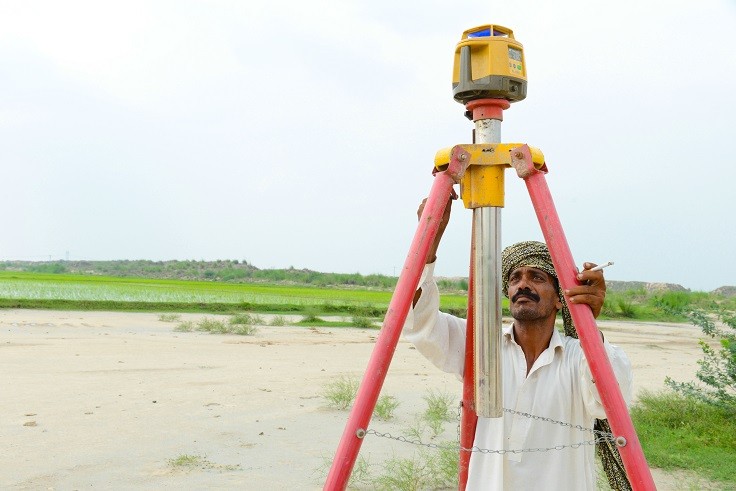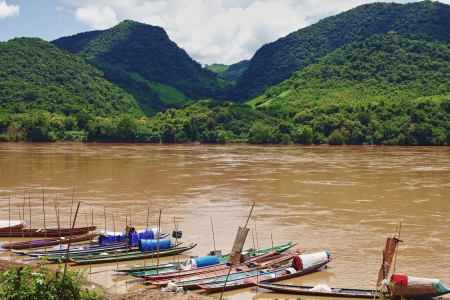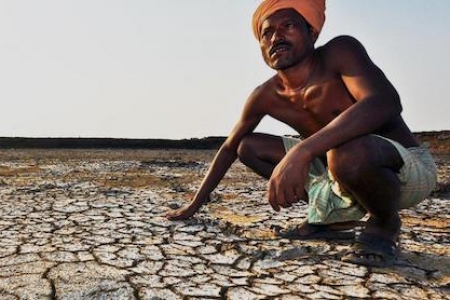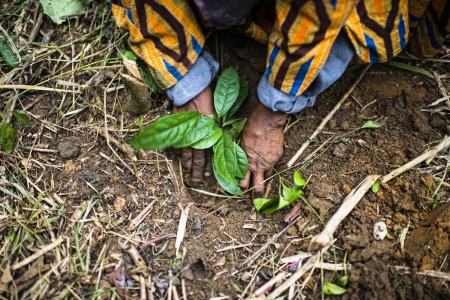New innovations are revolutionizing the measurement of water productivity
Farmer Ahmed may not know it yet, but he is a water productivity champion. Satellites scanning the Doukkalla Irrigation Scheme in Morocco have identified his fields as being the most productive in the area – up to 3 times the crop yield of his neighbors for a similar amount of water used.
So what is he doing right?
At this point, explained Wim Bastiaanssen of UNESCO-IHE, speaking at the session Agricultural water productivity; Can it be monitored?, part of this year’s Stockholm World Water Week, we don’t really know. The power of real-time satellite imaging has allowed researchers to single out such successful farms, but extension workers would need to pay Ahmed a visit to find out why he does so well. Being able to identify such productive individuals, enthuses Bastiaanssen, opens up new possibilities for learning and sharing.

In development jargon, Farmer Ahmed is a “positive deviant” – an individual who seems to be getting it right, without necessarily getting direct assistance from development professionals. The concept originally arose in public health, but now agriculture wants in on the act. Studying and sharing the best practices of such people has been part of a growing trend towards “bottom up” approaches to improving agriculture.
“Farmers look to their neighbors to measure their performance,” said session convener, Jopp Hoogeeven of FAO, so agriculturists and water managers need to take note.
Targeted Technology
To assess water productivity (WP) at field level in this way, satellites measure evapo-transpiration – the rate at which plants are growing and emitting water into the atmosphere. It is a technique that is fast developing and provides a hitherto unattainable degree accuracy on how plants are performing, and where and when they are doing so. This approach will also be important for measuring the progress of the Sustainable Development Goals relating to water and sustainable agriculture.
The session overall reflected on the huge possibilities that modern remote sensing and big data is now opening up for improving WP.
For instance, The FAO is developing a publicly accessible near real time database using satellite data that will allow monitoring of agricultural water productivity. This database can be used to propose solutions to reduce water productivity gaps while taking into account ecosystems services and the equitable use of water resources. Eventually, the proposed solutions should lead to an overall reduction of water stress.
But we should not just focus on WP, warned Baastianssen. Water accounting at the river basin scale – how much water is available and where it is going, is also important if attainable targets for sustainable development are to be set.
Other speakers looked at some specific examples where water productivity had been improved using hi-tech measuring and monitoring. For instance, 80% of South Africa’s water comes in winter 5 months. This represents a major challenge for its farmers. Water needs to be stored in quantity and used wisely. Andre Roux of the Department of Agriculture South Africa presented FruitLook – a more crop per drop website that uses satellite data to give farmers direct online access to information on how their crops are growing. 60% of users were found to have improved water productivity by at least 10%.
It is all very well making data available to farmers, but on its own it will not necessarily be enough of an incentive for them to change their techniques. IWMI’s Jeremy Bird, for instance, highlighted research the institute had undertaken in Pakistan that had clearly showed the benefits of laser land levelling in improving WP. But farmers were not motivated by the mere fact that WP could be improved. It was that less fuel was now needed to pump water that provided the incentive. This represented a major saving, and has led to a growing interest in the technique.
View Jeremy Bird’s Presentation: Achieving increases in water productivity
Other participants highlighted the dangers of relying too much on WP as a measure of “what works”. WP tells us little about how poverty or inequity is linked to improved agricultural performance. And the assumption that if you give farmers more information, they can better manage natural resources, was also criticized.
Overall, however, the mood was positive. New methods of data collection and analysis are opening up opportunities for sustainable improvements to smallholder agriculture, but there is an urgent need to involve software developers in the global south who can use local knowledge to make more appropriate data tools for the world’s poorest farmers.
This week, Thrive and WLE colleagues are at Stockholm World Water Week 2015. Opinions and analysis will focus on this year's theme of "water and development."













Comments
With the laser grader farmer reported to IWMI-Field Office Haroonabad staff that he saved 20 to 25% irrigation time to irrigate a field of wheat. Farmer measures water applied to field with respect to time instead of volume of water. He compared his laser graded field with his other field and shared his experience with me that his laser graded field irrigated in just half hour(30 minutes) while other field required 0.66 hours(40 minutes).
Thanks Muhammad. As you say, often the main attraction of laser land leveling is that it saves time and effort. Managing water resources is often not the farmer's primary concern - especially if access to water is free. When individual farmers use less water, however, the whole community can benefit.